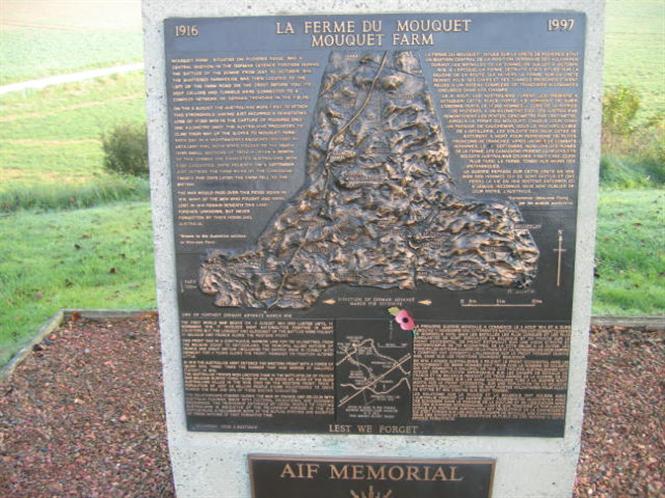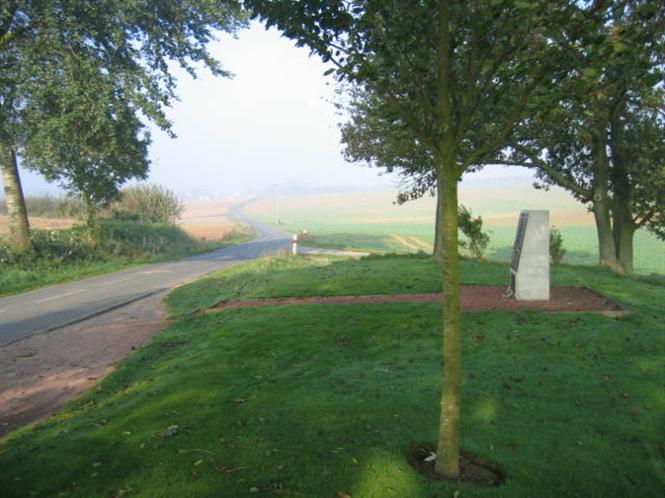Mouquet Farm Battle Exploit Plaque
Description
A plaque, mounted on a concrete monument, to commemorate the AIF's effort and its 6,300 casualties.
History
Mouquet Farm itself was a heavily defended German position half-way between Pozières and the German strongholds around Thiepval village. The British had thought that the positions around Thiepval would fall on the first day of the Somme offensive (1 July), but they had not. The objective of that unsuccessful first-day attack had been Bapaume. By mid-August the British still believed it was necessary to neutralise the German positions around Thiepval so that they could make eastward progress towards Bapaume. But in order to attack Thiepval, it was thought that Mouquet Farm would first have to be taken.
By 13 August 1916, the Australians were close to Mouquet Farm and they attacked it that night. A quarry near the farm was captured and a company under Captain Harry Murray, 13th Battalion (New South Wales) seized part of the German ‘Fabeck trench’ north-east of the farm. But Murray and his men were outflanked by the Germans and had to fight their way back to safety.
The battle of Mouquet Farm was the last of the battles in the Pozières area involving Australians.
Mouquet Farm is the name given to a series of Australian attacks northwards along the Pozières Heights between 8 August and 3 September 1916. They followed on from the seizure of Pozières and the German lines at the windmill east of the village in late July and early August. These operations all formed part of the British offensive east of Albert which began on 1 July 1916 and lasted until early November of that year. Collectively, they are known as the Battle of the Somme.
Construction Information
No information available at this time.
Location
Pozieres-Thiepval road., France.
The Memorial plaque is at the entrance to Mouquet Farm, by the side of the Pozieres-Thiepval road, off the D929 from Bapaume.


